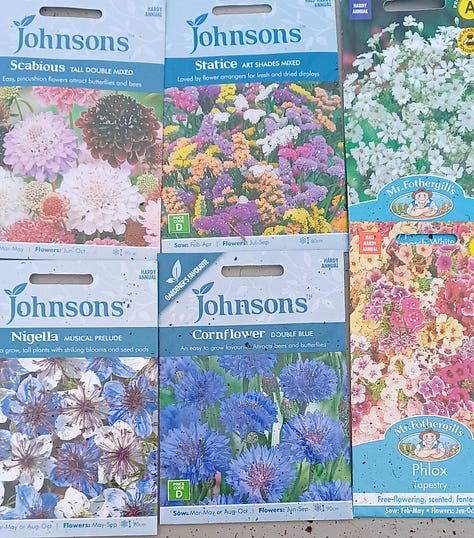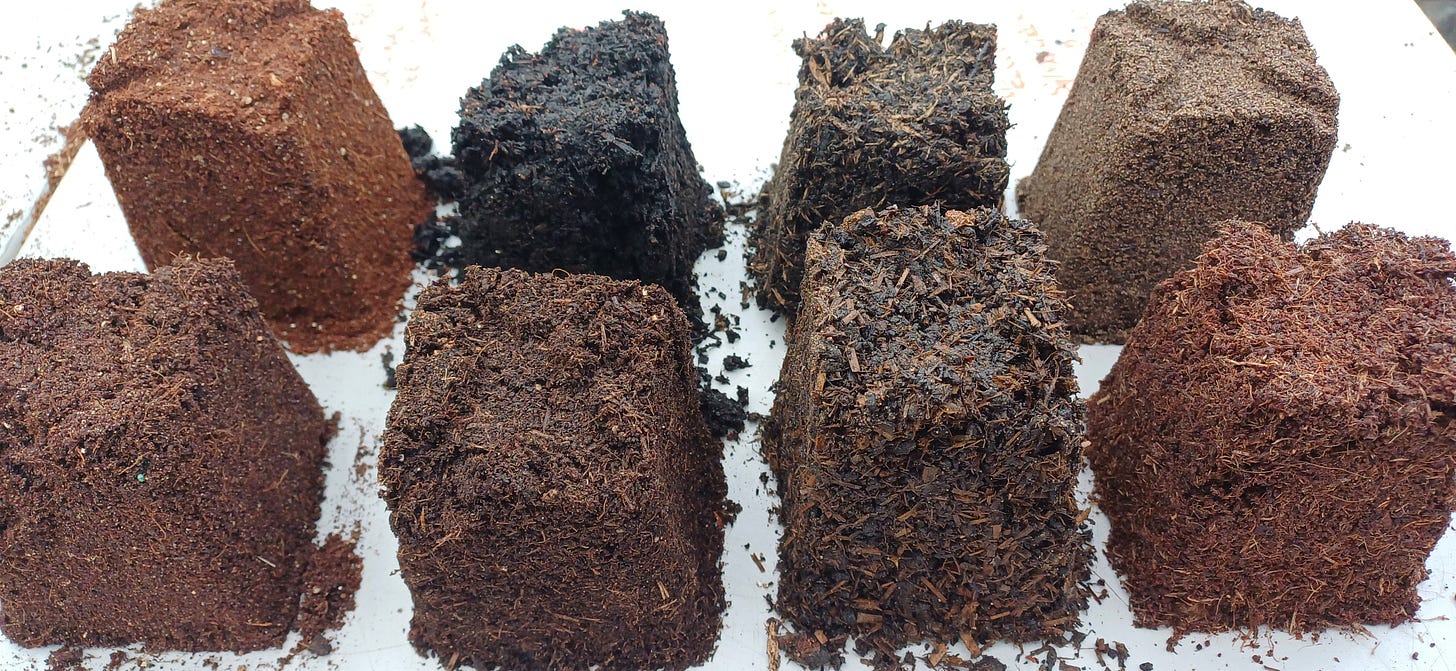Comparing Composts
There is a huge subject of debate among growers and it is based around compost. No matter what scale you grow on if you're in the UK you will notice a significant change in garden centres, this Spring as the government has now enforced restrictions on the sale of Peat-based compost. I have been growing Peat-free for over 10 years now, and I am in full support of the ban. This is not a compost company-bashing article but rather a sharing of experiences. I decided to write this as I have noticed a dramatic fluctuation in the quality and constituency supplied by some compost brands significantly since 2020. Along with my own experiences, I was contacted by a large number of other growers who had suffered poor germination and plant
growth.
There is nothing worse than investing time, and money in seeds and having terrible results. Therefore for your information here are a few of my experiences and some information that has been shared with me by people who work in the compost industry.
What it can look like when compost goes wrong.
Over the last couple of years, I have had some shocking results from 2 brands of compost I have previously had good results with ( So as not to bias this article I am not going to name them ) when I based on social media last year for people to contact me with compost-based issues I noticed a lot of people were having disheartening issues. Poor root development, yellowing leaves and wilt are all things I have witnessed.



Since that point, I have spoken to people who work at compost companies, growers at large-scale nurseries and independent compost consultants. The issues people are seeing are similar to the ones I experienced and can be a result of a lack of nitrogen this is caused by a reaction between naturally occurring chemical combinations in the compost bag over time. Which results in Nitrogen lock, (plants require Nitrogen for healthy green growth). It’s not that it is not there is no Nitrogen but that it becomes impossible for the plants to access it. I have been advised that as this happens over time, it is important that compost is purchased as fresh as possible. Which is difficult and you have to be trusting of the retailer. Ideally, compost should be used within 6 months of production. Although all companies have different claims on how long their compost can sustain and feed plant growth, I have been advised and found from my practices that feeding with a liquid fertilizer such as seaweed as soon as plant leaves develop after seed leaves helps plants maintain healthy development.
Another key factor which can affect plant growth is watering, dependent on what the compost contains watering will be different between brands there is not a one-size-fits-all scenario if your allotment neighbour is growing in one compost and you another you won’t be watering the same amount, the best thing to do is always check the underside of your seed tray or beneath the surface of the compost as some times it can look very dry on top but be very wet underneath or vice versa.
I have also noticed that as the market for the materials in compost fluctuates in price and the science evolves compost mixes are everchanging, as a consumer you will never be able to be totally confident that your favourite compost will be the same from month to month. It is a case of testing and trialing what works best for the plants you are growing.
Firstly what is in these composts?
Well bafflingly not all of those you buy are composts, but growing media. The difference is if the mix doesn’t contain decomposing materials it is growing media (although many still use the term compost as that is what we are used to) so therefore I will refer to them all under the term compost. However, as a note, if compost contains any amount of green waste it is suitable for improving soil and using it to grow young plants and seeds is not advisable. As you will see from the 8 examples above composts can all look very different. I remember when peat-free was very new, I was working in a garden centre at the time and can recall the amount of times people complained about the compost looking weird. Compost companies are using lots of different mixes. Depending on which band of compost you buy it could contain wood fibre, coir, wool, bracken, and or composted green waste. All of these materials are used to aerate and retain water in the compost which replaces the roll of peat.
Coir- Is a byproduct from coconut husks, so obviously doesn’t grow in the UK. It has quite a significant carbon footprint due to its processing and shipping. Although many companies are trying to use responsibly sourced Coir
Wood Fiber- This is more likely to be locally sourced to the compost factory, made from pressure-heated wood chips that are blown into small particles.
Wool and bracken - A mix used by 1 particular company within this comparison and is all sourced locally to the composting factory.
I will be comparing growing results from the following compost brands
Bulrush - Multi-purpose
Dalefoot -Seed mix
Evergreen - Multi-purpose
Fertile Fiber -Original seed Compost
Levington- Seed compost
Melcourt - seed compost with John Innes
Rocket - Multi-purpose
Westlands - Seed compost with John Innes
Today 29th February 2024 I have sown 6 cells, containing 2 seeds of each of the following cut flower favorites. Scabious, Statice, Gypsophila, Nigella, cornflower and Phlox. I purchased all compost within the last few weeks and all seed is freshly purchased from a local garden center. All trays are in the same position in an unheated polytunnel and will be watered in the same amount. I won’t be using Fetiliser and will report back in 7 weeks with the results of germination and root growth.



In the interests of openness, I have included 2 brands I have previously grown in, I have previously had good results with them but have also had some shocking results as I have previously mentioned growing in the same 2 brands. The compost I have selected to grow with this year is Bulrush peat-free professional mix I have trialled this compost and have been very happy with the results. I haven’t included it in this trial as it is only available to trade and I was interested to see what the Retail brands were like.
See you again in 7 weeks with the results
Happy Growing
Suzie





Thanks for this. I’ll be very interested to see the results.
Great article. Look forward to the results in 7 weeks.